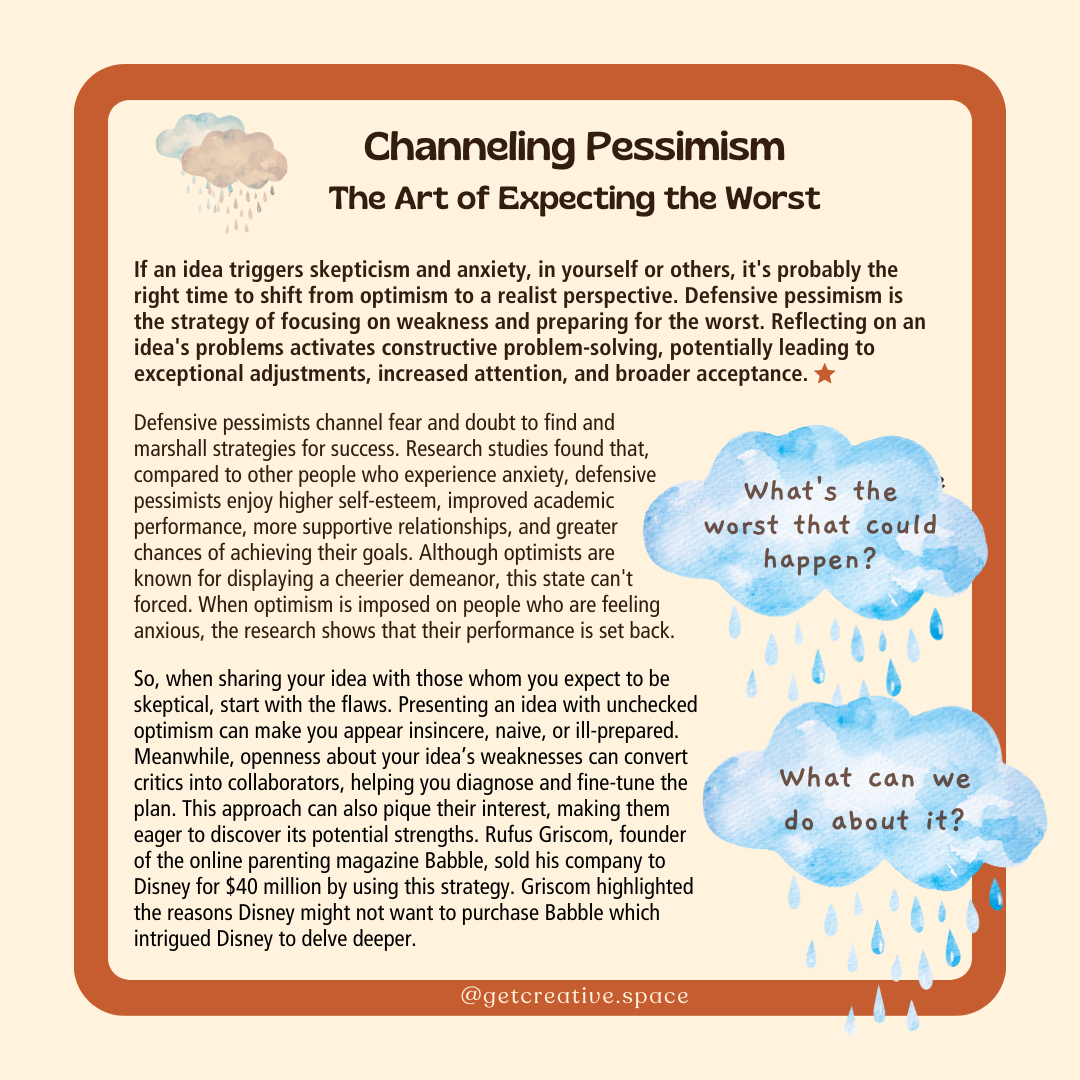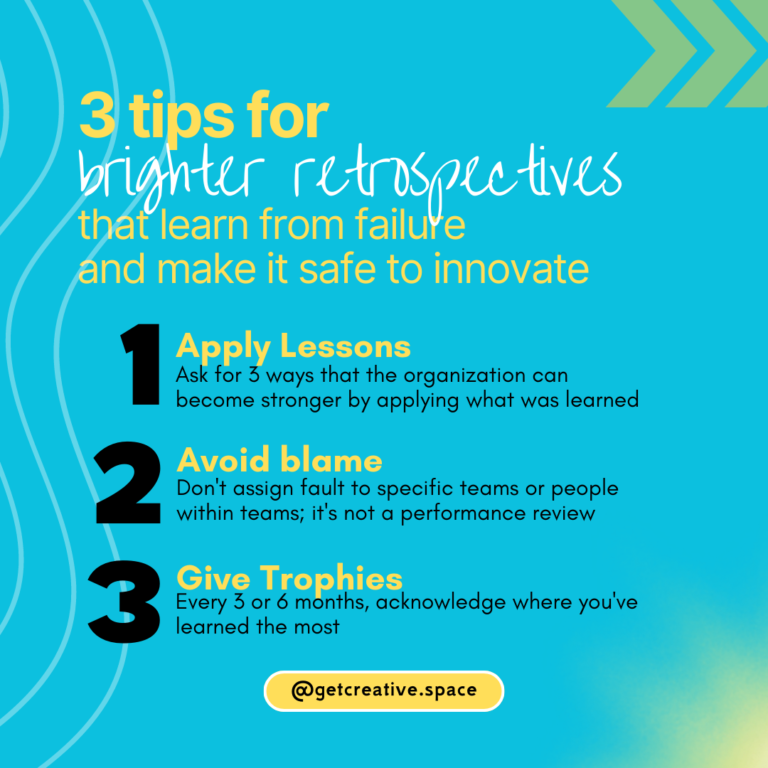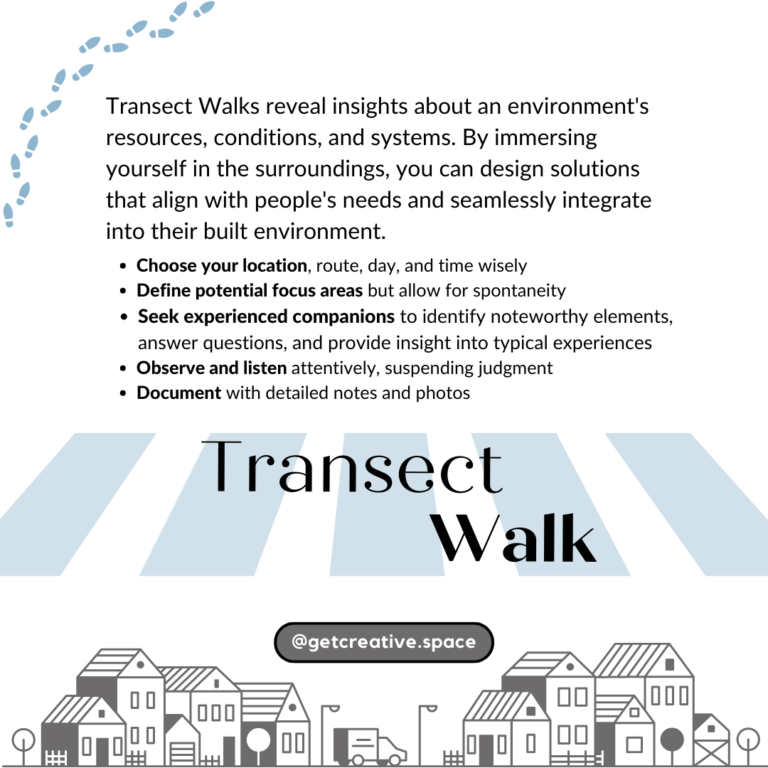Channeling Pessimism: The Value of Expecting the Worst
When an idea faces skepticism or generates anxiety, either in yourself or with potential collaborators, it might be more beneficial to shift from positivity to a realistic perspective. This employs a strategy called defensive pessimism, where you focus on the drawbacks of the idea and prepare for the worst-case scenario. Reflecting on the problems in your idea can bring on constructive problem-solving, potentially leading to exceptional adjustments, increased attention, and broader acceptance of the idea.
Defensive pessimism is the approach of anticipating the worst and preparing accordingly. Studies often compare it with strategic optimism, which is about hoping for the best and avoiding thoughts about potential negative outcomes. Both strategies have their benefits and limitations and usually yield comparable results. Strategic optimists sometimes appear to have the upper hand because they typically possess a more positive and cheerful demeanor which is associated with higher satisfaction and better mental health.
However, optimism also has its downsides. Being excessively or unrealistically optimistic often leads to neglecting problems and avoiding measures to solve them. For example, a research study discovered that unrealistic optimism could dissuade individuals from exercising to enhance their health, producing a higher risk of heart disease.1 Moreover, if you’re anxious, prompts to remain positive end up being more jarring than helpful.2
Problem-solving is a better strategy for long-term satisfaction when anxiety is triggered. By channeling fear and doubt, defensive pessimists find and marshall strategies for success.3 Through harnessing negative thinking, defensive pessimists enjoy higher self-esteem, improved academic performance, more supportive relationships, and greater chances of achieving their goals compared to other people who suffer from anxiety.4 While defensive pessimists can achieve a positive outlook, it’s not at the cost of shying away from introspection or sidestepping inconvenient facts.
Accordingly, when sharing your idea with those whom you expect to be skeptical, start with the flaws. Presenting an idea with unchecked optimism can make you appear insincere, naive, or ill-prepared. Openness about your idea’s weaknesses can convert critics into collaborators, helping you diagnose and fine-tune the plan. This approach can also pique their interest, making them eager to discover its potential strengths. This strategy proved successful for Rufus Griscom, founder of the online parenting magazine Babble, who sold his company to Disney for $40 million. Griscom highlighted the reasons Disney might not want to purchase: disappointing user engagement and an outdated backend. This approach intrigued Disney, leading them to delve deeper.
Balance is always key. Negative thinking that consumes your mind can have long-term negative health effects. Yet, the right way to respond to initial negative thoughts might be to focus for a moment on the problems.
- Davidson, K., & Prkachin, K. (1997). Optimism and Unrealistic Optimism have an Interacting Impact on Health-Promoting Behavior and Knowledge Changes. Personality and Social Psychology Bulletin, 23(6), 617–625. https://doi.org/10.1177/0146167297236005
- Norem, Julie K., and Nancy Cantor. “Defensive Pessimism: Harnessing Anxiety as Motivation.” Journal of Personality and Social Psychology, vol. 51, no. 6, 1986, pp. 1208–1217, https://doi.org/10.1037/0022-3514.51.6.1208.
- Seery, Mark D., et al. “The Effects of Negative Reflection for Defensive Pessimists: Dissipation or Harnessing of Threat?” Personality and Individual Differences, vol. 45, no. 6, Oct. 2008, pp. 515–520, https://doi.org/10.1016/j.paid.2008.06.004.
- Norem, Julie K., and Edward C. Chang. “The Positive Psychology of Negative Thinking.” Journal of Clinical Psychology, vol. 58, no. 9, 2002, pp. 993–1001, https://doi.org/10.1002/jclp.10094.







